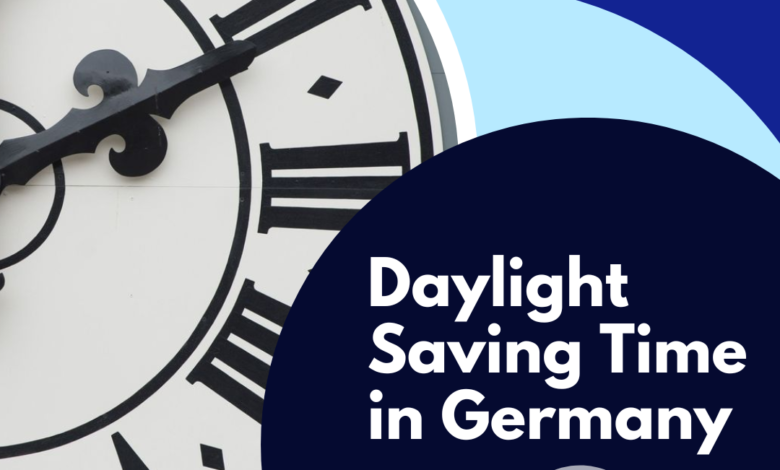Daylight Saving Time in Germany

Daylight Saving Time in Germany
Over the past 100 years, it has been a practice that has come and gone in Germany and other nations. The implementation of Daylight Saving Time occurs annually between the end of March and the beginning of October. Here’s a quick explanation if you’ve ever wondered why the clocks change twice a year and if it will always be this way.

History of Time in Germany
One standard time zone governs all German federal states: Germany has been using Central European Time (CET), often known as UTC+1.00, since 1893.
Germany has only maintained consistent timekeeping for the past 120 years or more. Prior to this, when the nation was merely a patchwork of independent cities, duchies, and kingdoms, each region maintained its own time. This was determined by the rising and setting of the sun, the ringing of nearby church bells, and the schedules maintained by the country’s five different railway systems. This meant that short interstate trips may travel through as many as six distinct time zones for a passenger.
Daylight saving
The establishment of the German Empire in 1871 did not immediately result in the synchronization of the country’s time management. Germany declined to participate in the Washington Meridian Conference in 1884 where 25 nations agreed on a global time standard because Berlin, not London, was the main meridian. The German Empire did not officially adopt CET until 1893.
Time change in Germany
Time changes twice a year due to Daylight Saving Time in Germany and other countries (Zeitumstellung). On the final Sunday in March, at 2 am, Germany’s Daylight Saving Time starts, requiring residents to advance their clocks by one hour as Central European Summer Time begins. On the last Sunday of October, Daylight Saving Time comes to an end and Central European Time returns.
-
- Summer time: Germany shifts to summertime on Sunday, March 27, 2022, at 2 a.m.
- Winter time: On Sunday, October 30, 2022, at 3 a.m., summer time ends and winter time (or regular time) begins.
When did Daylight Saving Time start (DST)?
- The Romans used water to measure time and adjusted their scales over the year in accordance with solar motions. They are said to have first introduced the idea of moving the clock forward and backward to reflect changes in the seasons and the length of the day.
- Following the invention of the pendulum clock and other more precise timekeeping devices in 1784. The polymath Benjamin Franklin recommended shifting waking hours to better match daylight hours. After watching city inhabitants sleeping late into the morning and missing out on sunlight hours. He advised in a sarcastic letter to The Journal of Paris that people should wake up earlier in summer to save money on candles and lamp oil.
- George Vernon Hudson, a scientist from New Zealand, made the suggestion in 1895. That he would have longer daylight hours to gather and study insects. William Willett, a British constructor, proposed a clock shift in 1907 as a way to conserve energy. All of these concepts sparked curiosity, but they were never put into action.
Germany and Austria introduced Daylight Saving Time on April 30, 1916, making them the first two nations to do so. The rationale at the time was two years into World War I. It was to cut back on artificial lighting in order to conserve fuel and energy for the war effort. Other nations in Europe started to follow suit after seeing the wisdom of the strategy. After the war, most people went back to their regular schedules, with Daylight Saving Time being considered a legacy of the conflict.
Also, Read
Ausbildung in Germany: Everything You Need to Know
€9 Ticket in Germany
8 Important Things To Do After Reaching Germany
Visit our website for more articles related to studying in Germany.
Follow us on Instagram and Facebook for more tips & information on studying in Germany.
